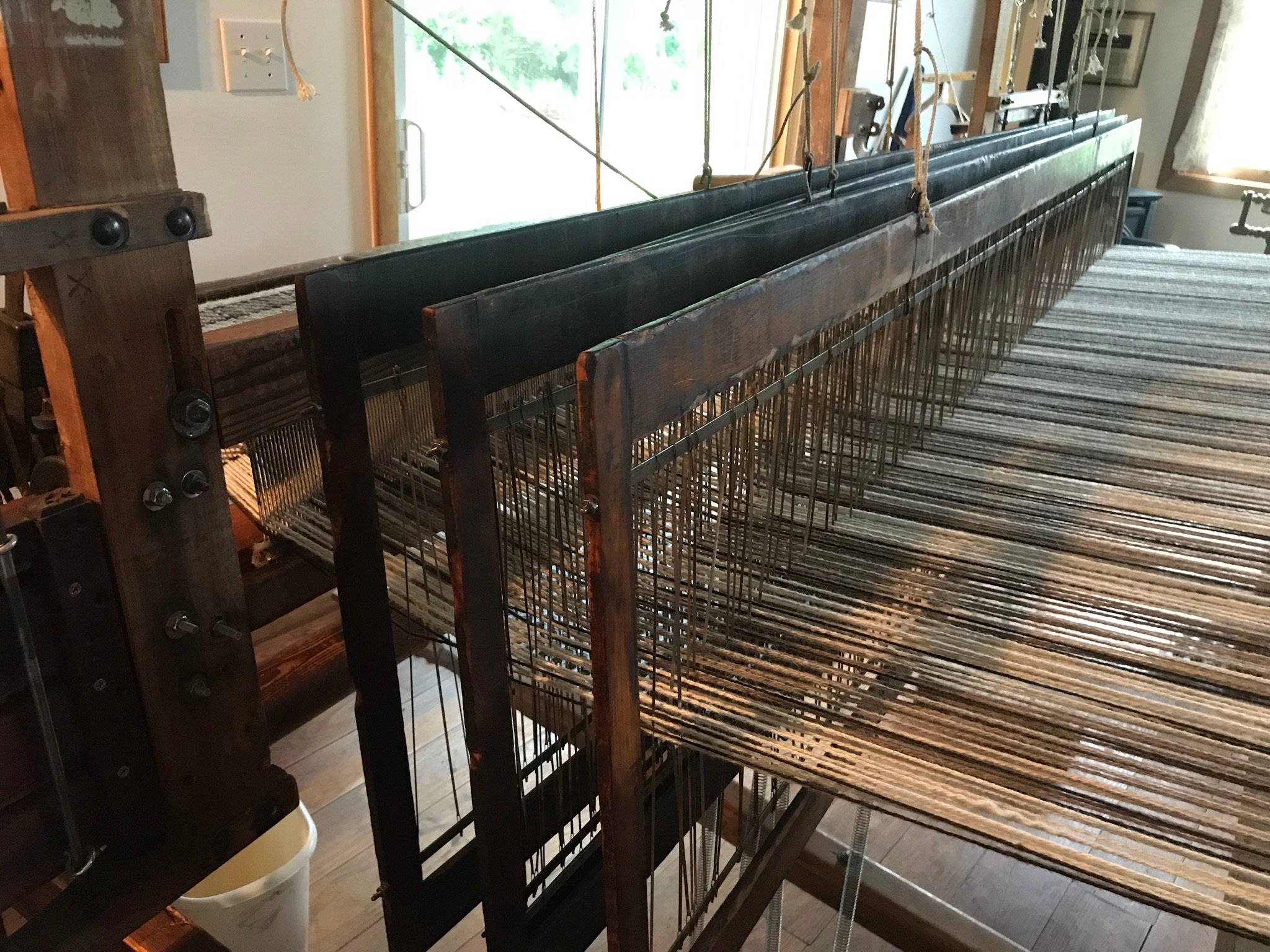The Flying Shuttle and Luddites
July 9, 2021
We dropped yarn off at the weavers last week and I was fascinated by the loom that Karin's father brought over from Scotland. I was, in fact, immediately sucked down a rabbit hole of antiquity and folklore. With parts dating back to the 1700s, the loom is a functioning story board of the rich history of the textile industry. Perhaps it's just an oddity of mine, but I really wanted to touch the frames and move all the parts and pieces. I'm not a weaver and I resisted the urge as I wouldn't have had a clue of what I'd be doing, but I am, none the less, completely drawn in by the industrial beauty of it. The older pieces sport the darkened luster of 200 years of age, while newer parts give evidence to necessary repairs brought on by generations of practical use.
The loom is equipped with a “flying shuttle” which at the time was a relatively recent and controversial invention. The shuttle, invented by John Kay, of England in 1733, was brilliant in its simplicity, and startling in its implications. It helped to launch not only the Industrial Revolution and ensuing violent uprising but it effectuated the self imposed exile and impoverishment of John Kay himself.
simplicity, and startling in its implications. It helped to launch not only the Industrial Revolution and ensuing violent uprising but it effectuated the self imposed exile and impoverishment of John Kay himself.
Until Kay's invention, the width of a loom that one person could operate was limited to the length of the weaver's outstretched arms, as they needed to send the shuttle (with the weft thread attached) back and forth through the warp. That limited the width of cloth produced, or required two weavers working together at a wider loom. The flying shuttle automated the process, requiring only one person to operate a loom of any width, and eventually, half of the skilled textile workers in England were no longer needed or gainfully employed.
The disgruntled (and unemployed) weavers banded together, choosing as their figurehead the mythical apprentice “Ned Ludd”, who is said to have taken revenge on an unfair employer by smashing his machinery. The group called themselves “Luddites” and retaliated against the industrialization of their craft by destroying the factories and machines which they believed were threatening their livelihood. Whether, or not, Ned was a real person is up for debate, but the uprising in his name was very real. It lasted until the British Army sent 14,000 soldiers to quell the rebellion, and the protesters either disbanded or were shot, hung or exiled to Australia.
Another, and perhaps even broader, consequence of the invention was that the speed of weaving was so accelerated by the flying shuttle that the spinning industry could no longer keep up with production of the yarn needed. Thus necessitating, and facilitating the invention of the Spinning Jenny and other improvements to the textile industry which, in turn, helped launch the Industrial Revolution.
John Kay, himself, also suffered from the unintended consequences of his own invention. Though he received a patent for the Flying Shuttle, he was systematically cheated out of his patent royalties by factory owners, and he nearly bankrupted himself trying to litigate his claims. Practically penniless and harassed by violent mobs, he left England and moved to France, where he neither knew anyone nor spoke the language.
Weaving to me has always seemed like a completely benign trade, only slightly less domestic than knitting. From now on though, I'll be seeing it all through a brand new lens! When our Shetland yarn is tied onto that flying shuttle, racing back and forth across the warp, I'll be able to imagine it's passage back through time, and home again, weaving together the web of innovation and industry (including the destruction and despair) with the simple beauty of our sustainably raised and locally spun yarn, to create handcrafted throws that will hopefully be, practically, “Luddite approved”.
